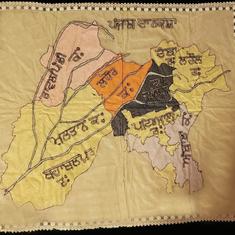The Indian saptak or heptad is commonly perceived as a group of seven swaras or notes. Four of these have komal or flat variants and one has a tivra or sharp variant. However, since time immemorial, scholars and practitioners have held that there are micro-tonal intervals spread across the saptak, thus bringing the total number of tonal variations to 22 shrutis (literally, the smallest tonal interval that is audible to the human ear).
While this aspect was deliberated upon in various texts, it was largely generally believed that the shrutis could not be pinpointed and were instead tonal areas that could be experienced in a specific musical context.
During the colonial period, the nationalist project of classicising Indian music and establishing it on a par with Western music prompted some scholars to project Indian music as much as a science as an art. One of the ways to further this cause was to calculate and define mathematical values of the shrutis within a saptak.
Several discussions pertaining to the shrutis took place during music conferences held in the early part of the 20th century. In addition, many scholars wrote on the subject. For instance, Krishnaji Balwant Deval alias Ballal alias Balaji (1847-1931), District Deputy Collector of Ratnagiri, wrote prolifically on this between 1886 and 1908 and his treatise, Hindu Musical Scale and Twenty-two Shrutis, was published in 1910. Similarly, Mangeshrao Telang (1856-1949), Assistant Registrar in the Bombay High Court and a veena player, wrote The Twenty-two shrutis of Indian music.
In practice
The discourse on shrutis was not restricted only to scholarly writings. It even saw its practical application through the work of GB Achrekar (1885-1939), a musicologist, musician and artisan of Poona (now Pune), who constructed a shruti-harmonium called shrutimandalmanjushe and delivered lectures on the subject along with demonstrations at Bombay (now Mumbai), Poona and Kolhapur.
Over the centuries, practitioners have continued to use the shrutis in their music. Some believe that they can actually define each shruti as a discreet tonal unit, while others regard the use as a more contextual occurrence that is difficult to pinpoint and yet provides a distinct character to each raag.
A project titled Music in Motion, initiated by Bernard Bel and later led by Suvarnalata Rao (National Centre for the Performing Arts, Mumbai) and Wim van der Meer (University of Amsterdam) towards developing a system of notation that would best represent the special characteristics of Hindustani music, also examines the use of the shrutis in performance.
Individual presentations in the raag Darbari Kanada by well-known dhrupad singer Uday Bhawalkar and khayal singer Ram Deshpande accompanied with a graphic notational display of the music that can be accessed here
Vidyadhar Oke
Harmonium player and researcher Vidyadhar Oke has also spent several years in studying the shruti phenomenon and has constructed a harmonium that reflects the 22 shrutis. Here, he demonstrates the mathematical values for each.










